Water levels near Sao Paulo still dropping, Brazil
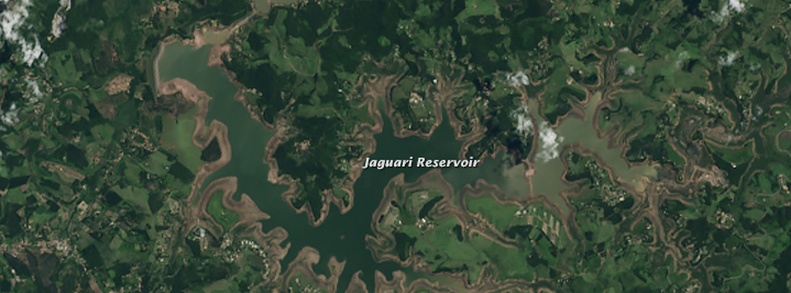
Southeastern and eastern Brazil is already 100 to 200 millimeters (4 to 8 inches) below normal rainfall for the calendar year, following 400 millimeter deficits for 2014, NASA's Earth Observatory writes.
According to news reports, the Cantareira reservoir system, which supplies water to half of the people in São Paulo, is at roughly 10 percent of capacity, which is is up from 5 percent in October, just before the rainy season began. The depleted drinking water supply has been attributed by news and advocacy sources to a combination of unusual weather conditions and uneven resource management. Some scientists assert that deforestation has played a role in changing weather patterns and water storage.
“The drought most definitely continues, and the images of the reservoir levels tells the story very well,” said Michael Coe, a scientist from the Woods Hole Research Center who studies land and water issues in the Amazon.
“The fact that the reservoir is lower in February 2015 – the height of the wet season – than in October 2014 – the end of the dry season – tells us that there clearly is no recharge occurring. In other words, whatever rain has occurred during the wet season hasn’t been enough to produce significant runoff and fill the reservoirs,” Coe says.
The Operational Land Imager on the Landsat 8 satellite captured these views of the Jaguari Reservoir, part of the Cantareira System.
The top image was acquired on February 11, 2015; the middle image is from October 22, 2014, near the end of the dry season; and the third image shows conditions a year ago, on February 8, 2014. Note how the light-colored “bath-tub ring” of lake-bottom sediments grows around the water edges, how new islands emerge, and how some basins are devoid of water by 2015.
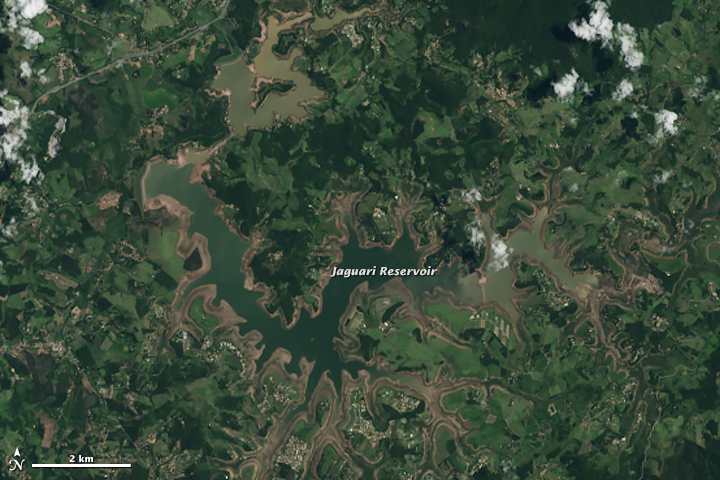
Image acquired February 11, 2015. Credit: Landsat 8 – OLI
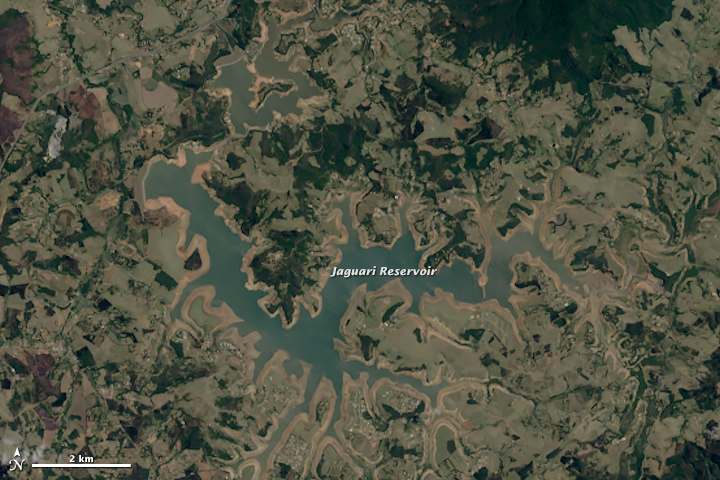
Image acquired October 22, 2014. Credit: Landsat 8 – OLI
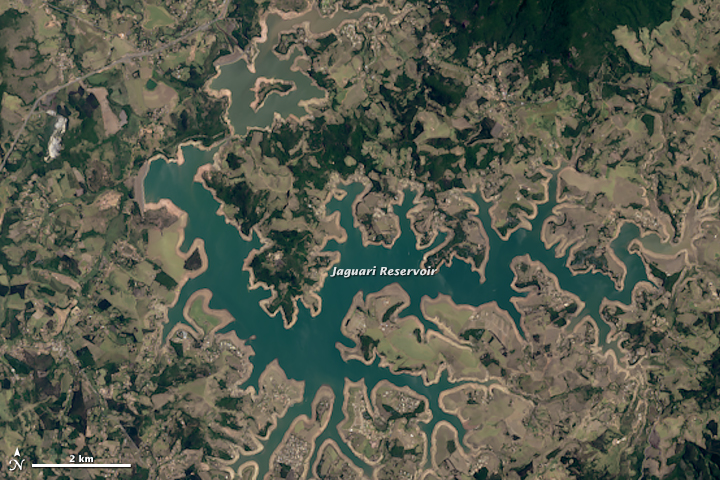
Image acquired February 8, 2014. Credit: Landsat 8 – OLI
Though the water levels continue to drop, the landscape itself gives a counter-intuitive signal. February 2015 is not just greener than October (dry season), but it is also greener than February 2014, even though the decline in rainfall has persisted for several years.
After rain falls, plants soak up much of the water before it trickles into waterways or percolates down into the water table, notes Marcos Heil Costa, a climate scientist at the Universidade Federal de Vicosa (Brazil). It takes just a few days for the landscape to green-up after rain, but it takes several weeks to become brown. Several rainfall events just before the 2015 Landsat image turned much of the vegetation green even as the reservoir told a different story.
This is also clear in the map below, which shows the normalized difference vegetation index anomaly (NDVIA) for February 2–17, 2015, across much of Brazil. The map contrasts plant health in 2015 against the average conditions for 2001–2014. Brown areas show stressed vegetation, while greens indicate healthier vegetation for the time of year. Grays are areas with insufficient data, often due to persistent cloud cover. NDVI is a measure of how plant leaves absorb visible light and reflect infrared light. Stressed vegetation reflects more visible light and less infrared than healthy vegetation.
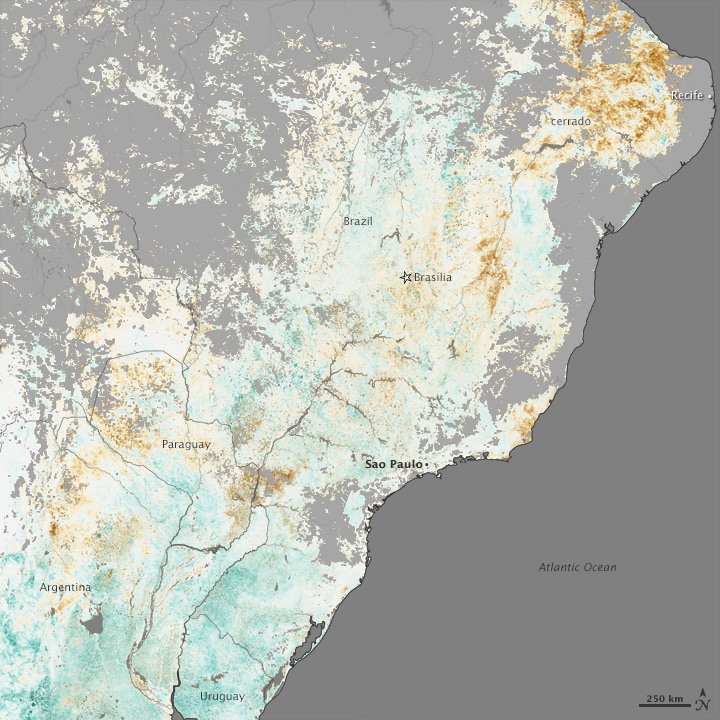
Image acquired February 2 – 17, 2015. Credit: Landsat 8 – OLI
Source: NASA / Earth Observatory
Featured image credit: Landsat 8 – OLI

Commenting rules and guidelines
We value the thoughts and opinions of our readers and welcome healthy discussions on our website. In order to maintain a respectful and positive community, we ask that all commenters follow these rules:
We reserve the right to remove any comments that violate these rules. By commenting on our website, you agree to abide by these guidelines. Thank you for helping to create a positive and welcoming environment for all.